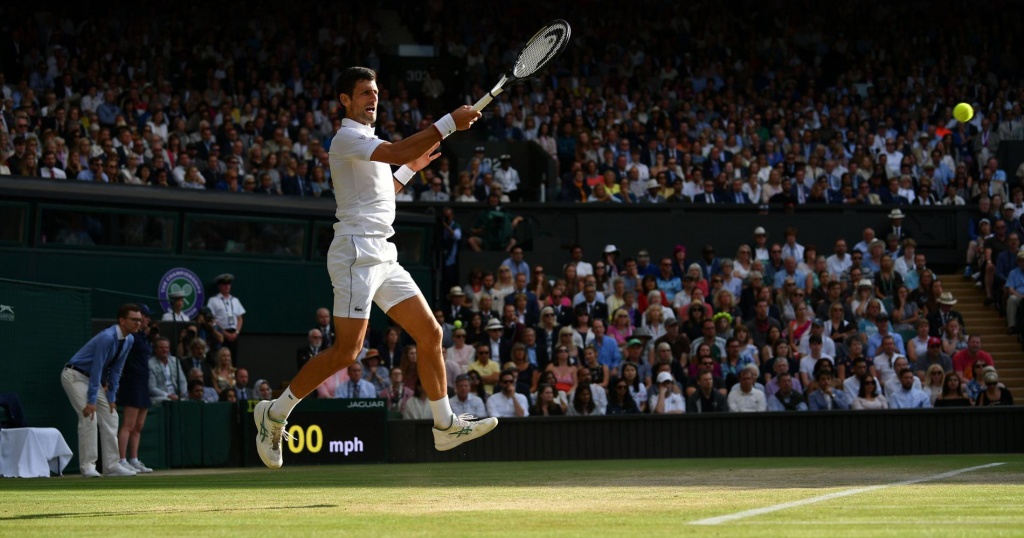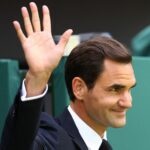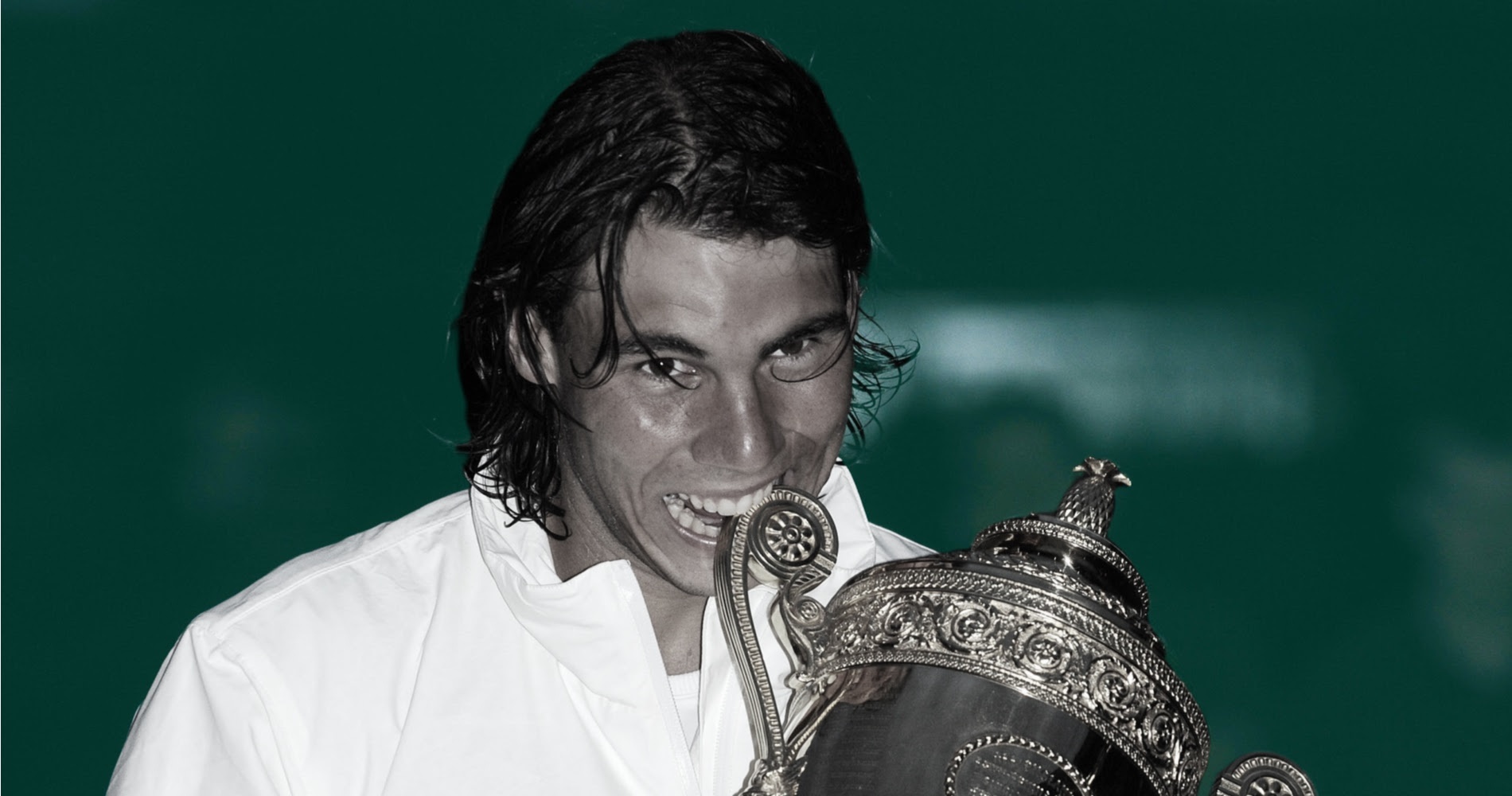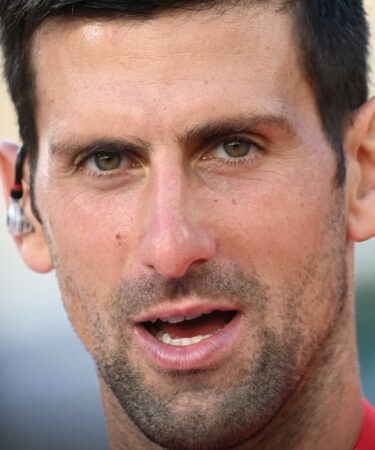July 14, 2019 : The day Djokovic beat Federer for the third time in a Wimbledon final
Every day, Tennis Majors takes you back in time to relive a tennis event which happened on this specific day. On this day, in the Wimbledon final, Novak Djokovic broke the hearts of millions of Federer fans throughout the world
 Federer – Djokovic
Federer – Djokovic
On this day, the 14th of July 2019, in the Wimbledon final, Novak Djokovic broke the hearts of millions of Roger Federer fans throughout the world by edging the Swiss in five sets after saving two match points in the decider. Federer had a hold on the match most of the way, but Djokovic proved himself mentally stronger on big points, winning three tie-breaks to triumph in the end 7-6 1-6 7-6 4-6 13-12. On this occasion, for the first time in history, the audience also witnessed a tie-break at 12-12 in the fifth set.
The players involved: Djokovic and Federer
• Novak Djokovic, the number one
Novak Djokovic was born in 1987. He entered the top 100 in 2005, finishing the year as world No 83. In 2006, he rise on the Grand Slam stage commenced when he reached the quarterfinals at Roland-Garros while ranked only No 63, after he beat world No 9 Fernando Gonzalez in the second round.
Djokovic’s breakthrough year was 2007, when he reached the semi-finals at Roland-Garros and Wimbledon (stopped each time by Rafael Nadal) before making his way to the US Open final where he was defeated by Roger Federer (7-6, 7-6, 6-4) in his first major final. At the start of 2008, he triumphed for the first time in a major tournament, edging Jo-Wilfried Tsonga in the Australian Open (4-6, 6-4, 6-3, 7-6). Djokovic then remained world No 3 in the next three years, often reaching the last rounds of major events where Federer and Nadal kept preventing him from adding more major crowns to his list of achievements.
Things changed in 2011, when Djokovic played a close to perfect first half of the season. Triumphing at the Australian Open at Andy Murray’s expense, he remained undefeated for 42 matches until Federer edged him in the semi-finals of Roland-Garros. Since then, the Serbian had accumulated 14 new Grand Slam crowns: Wimbledon in 2011, 2014 and 2015; the US Open in 2011, 2015 and 2018; the Australian Open in 2012, 2013, 2015, 2016 and 2019; and after many failed attempts, he had also triumphed at Roland-Garros in 2016. Although he had been challenged for the world No 1 spot, especially by Rafael Nadal in 2013 and 2014, he had spent more than 250 weeks on top of the ATP ranking since 2011 and by the 2019 Wimbledon final he finished the year five times as world No 1.
• Federer, the Wimbledon master
Federer, the Swiss genius born in 1981, was 37 years old in July 2019. He had dominated the game in the 2000’s, especially between 2004 and 2008, conquering 12 Grand Slam titles before Nadal challenged him for the world No. 1 spot. In 2009, after three lost finals against his Spanish nemesis, he eventually triumphed at Roland-Garros, achieving the career Grand Slam in 2009.
If the 2000s were the decade of Federer, then it soon would become apparent that the 2010’s would be Djokovic’s decade.
In 2011, Djokovic became the best player in the world. Federer, who had claimed 16 Grand Slam titles between 2003 and 2010, did not lift a major trophy until Wimbledon 2012. In the next 11 Grand Slams, he reached the final only once – at Wimbledon in 2014, when Djokovic edged him in a five-set battle. Federer was also stopped three times in the semi-finals.
Djokovic defeated him in major finals twice in 2015, at Wimbledon and at the US Open. In 2016, Federer had to put an early end to his season after losing in the semi-finals at the All-England Club.
Federer had not claimed a Grand Slam in four years at that point, and many experts now thought he was incapable of triumphing in major events anymore at the aged of 34, with his main rivals still yet to turn 30. They were wrong: Federer made a spectacular comeback in 2017, winning the Australian Open after edging Nadal in one the most awaited matches in Australian Open history (6-4, 3-6, 6-1, 3-6, 6-3).
In addition to that, Federer clinched the Wimbledon crown for the eighth time later that season, setting an all-time record, and in 2018 he managed to defend his Australian Open title. At Wimbledon in 2019, Federer now held 20 Grand Slam titles, but once again, after 18 months without a major triumph, the same question arose: could he still compete for big titles, a few weeks before turning 38?
The place: Wimbledon Centre Court
Wimbledon is the oldest and the most prestigious tennis tournament in the world. Held at the All-England Lawn Tennis and Cricket Club since 1877, it moved into its current location in 1922, the same year when the Centre Court was built. Considered by many as the most intimidating court in the world, with its famous Rudyard Kipling quote above the entrance (“If you can meet with triumph and disaster and treat those two impostors just the same”), Centre Court had seen the best players of all time competing for the title.
After the US Open switched to clay and then hard court in the 1970s, and after the Australian Open switched to hard court in 1988, Wimbledon remained the only Grand Slam tournament to be played on grass. A surface that is usually more suitable for serve and volley players. Not only did Wimbledon keep its surface, but it also maintained old-fashioned traditions such as the white dress code.
The facts: Djokovic prevails in epic battle
The 2019 Wimbledon final was the 48th encounter between Djokovic and Federer. Djokovic led 25-22 in their head-to-head series and in recent years he had won most of their clashes. In fact, the Serbian had prevailed in their four last matches. Federer had not defeated Djokovic since the 2015 ATP World Tour Finals, and his last win over him in a Grand Slam was at Wimbledon in 2012 (in the semi-finals). On top of that, Djokovic had beaten Federer in two consecutive finals at the All-England Club, in 2014 and 2015. Even if he held the amazing record of eight Wimbledon titles, Federer was not the favourite on the 14th of July 2019.
The two champions had reached the final without much trouble. Federer had even treated himself with a semi-final win against his old nemesis Nadal (7-6, 1-6, 6-3, 6-4).
Riding that momentum, Federer dominated rallies in the early moments of the final, with a perfect mix of sliced backhands and powerful forehands. If Federer could keep that level, the Swiss might indeed have a shot at beating Djokovic to claim a 21st Grand Slam title.
At 5-4, Djokovic was close to losing the set when he got down 0-30, but for the first but not the last time of the day, he held his nerves to stay in the match. In the tie-break, Federer blew a 5-3 lead and he lost 7-5. Despite Federer’s 21 winners, against the odds, Djokovic took the first set.
After all the efforts he had made in the first set, Djokovic collapsed in the second set. His level dropped catastrophically and he gave Federer the set, 6-1.

In the third, Federer kept increasing pressure on Djokovic, but the Serbian wouldn’t’ break. At 5-4, the Swiss obtained a set point thanks to an outstanding backhand volley, but once again, Djokovic didn’t panic and saved it with a serve winner. Pushed into a tie-break, Federer crashed and made several unforced errors, and Djokovic won his second tiebreak of the day, 7-4.
One set from defeat, the eight-time Wimbledon champion then introduced more risk into the equation. Breaking Djokovic’s serve twice, he took the lead 5-2, and, though he lost his serve for the first time of the match, he sealed the set, 6-4 to take his opponent into a fifth set.
I’m very good at not getting depressed over a great tennis match
Roger Federer
This fifth set would last two hours. When Djokovic broke Federer to lead 4-2, it looked like the Wimbledon final was sealed. But Federer didn’t think so. Pushed by the Centre Court fans, who had clearly chosen the Swiss side, he gave his fans a new glimpse of hope and evened the score. At 7-7, this glimpse of hope changed into excitement as Federer had just taken Djokovic serve another time. He was now going to serve for a ninth title at the All-England Club.
A few booming serves later, the unbelievable was about to happen: aged 37, Federer was on the cusp of earning his first win over Djokovic in a Wimbledon final. With two championship points on his serve, at 40-15, silence ruled over Centre Court. But soon it would erupt into chaos as, two points later, a missed forehand from the Swiss and a passing shot from Djokovic levelled the score. The Serbian went on to break Federer’s serve.
Federer kept up the chase, hoping to earn more championship points, and at 11-11 he obtained another break point, but Djokovic bravely took the net and it turned out to be yet another missed opportunity for Federer.
It would also be the last.
When they reached 12-12, Djokovic and Federer played the first final set tie-break in Wimbledon men’s singles history. Once again, Djokovic’s nerves proved to be more solid and he won this historical tie-break, 7-3. The Serbian, who had played the entire match against a fiercely pro-Federer crowd, could enjoy his now usual bite of Centre Court grass.
Back from the dead, he was the new Wimbledon champion and he now held 16 Grand Slam titles.

It was a bitter pill to swallow for a Wimbledon legend. Not only did Federer win more points than Djokovic, but he had also hit 94 winners (while making only 62 unforced errors) while the Serbian had only hit 54 winners (and 52 unforced errors).
What next: Djokovic Smashes All the Records
Djokovic would finish 2019 as world No 2, behind Nadal. In 2020, the Serbian would triumph another time at the Australian Open, defeating Federer in the semi-final (7-6 6-4 6-3), before edging Dominic Thiem in the final (6-4, 4-6, 2-6, 6-3 6-4). The coronavirus crisis would then freeze the tour, and as a consequence Roland-Garros would be postponed and Wimbledon would be cancelled.
The Serbian legend went on to win his 21st major at Wimbledon in 2022, then add No.22 and No.23 at the Australian Open and Roland-Garros in 2023. He added No 24 at the US Open, and as of this writing, is back in the Wimbledon final in 2024, where he will bid for his record 25th major title.










